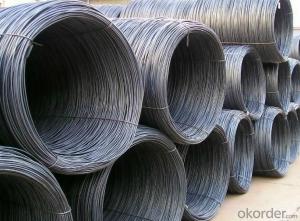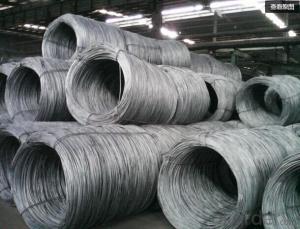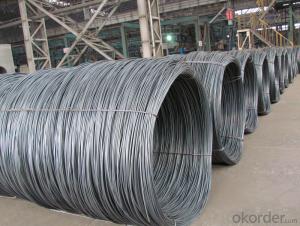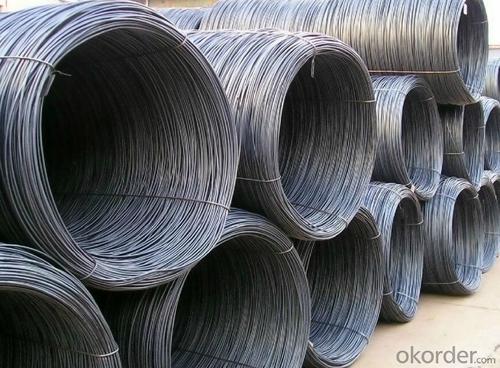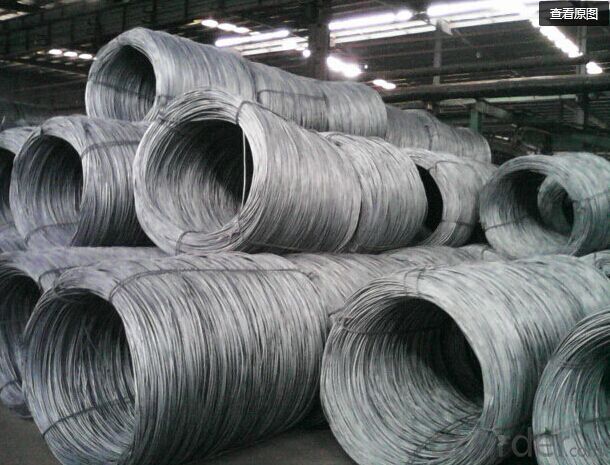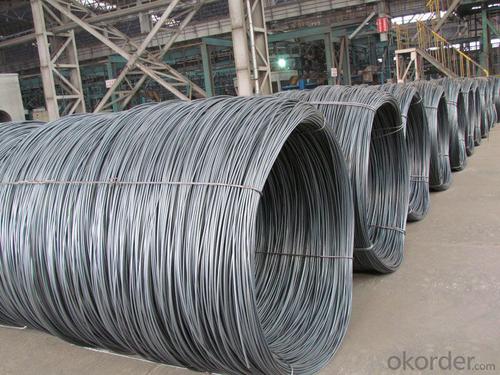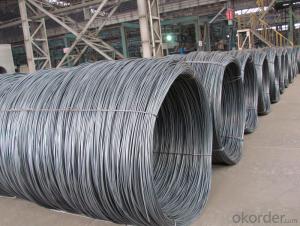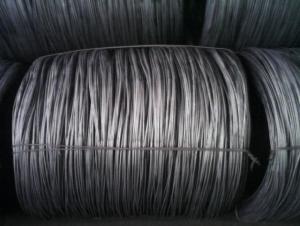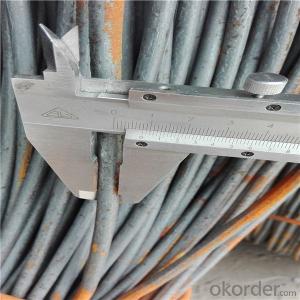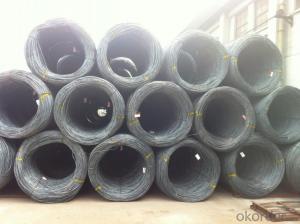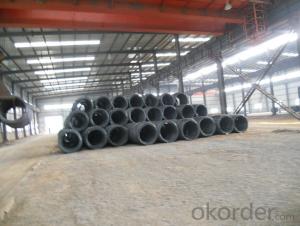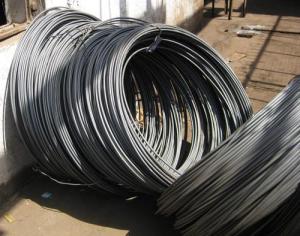Hot Rolled Steel Wire Rod in Coils SAE1008B
- Loading Port:
- Tianjin
- Payment Terms:
- TT OR LC
- Min Order Qty:
- 30 m.t.
- Supply Capability:
- 20000 m.t./month
OKorder Service Pledge
OKorder Financial Service
You Might Also Like
Specification
Product Description:
OKorder is offering Hot Rolled Steel Wire Rod in Coils SAE1008B at great prices with worldwide shipping. Our supplier is a world-class manufacturer of steel, with our products utilized the world over. OKorder annually supplies products to African, South American and Asian markets. We provide quotations within 24 hours of receiving an inquiry and guarantee competitive prices.
Product Applications:
Hot Rolled Steel Wire Rod in Coils SAE1008B are ideal for structural applications and are widely used in construction and manufacturing. Carbon steel wire rod is mainly used for reinforcement of reinforced concrete and welded structure or reprocessed (roberts , nail, etc.) materials, especially used to produce wire drawing, welding electrode, nails, spring, electronic, precise machinery parts and so on.
Product Advantages:
OKorder's Hot Rolled Steel Wire Rod in Coils SAE1008B are durable, strong, and wide variety of sizes. They are newly produced by good quality steel billets.
Main Product Features:
· Premium quality
· Prompt delivery & seaworthy packing (30 days after receiving deposit)
· Can be recycled and reused
· Mill test certification
· Professional Service
· Competitive pricing
Product Specifications:
Steel Grade: SAE1006-1018B
Standard: ASTM, GB
Diameter: 5.5mm, 6.5mm, 7mm,8mm,9mm,10mm,12mm,14mm
Type: in coil, coil weight around 2MT
Alloy or Not: Alloy
Technique: Hot Rolled
Place of Origin: China Mainland
Surface: round, no twisted, light and smooth
FAQ:
Q1: Why buy Hot Rolled Steel Wire Rod in Coils SAE1008B from OKorder.com?
A1: All products offered byOKorder.com are carefully selected from China's most reliable manufacturing enterprises. Through its ISO certifications, OKorder.com adheres to the highest standards and a commitment to supply chain safety and customer satisfaction.
Q2: How do we guarantee the quality of our products?
A2: We have established an advanced quality management system which conducts strict quality tests at every step, from raw materials to the final product. At the same time, we provide extensive follow-up service assurances as required.
Q3: How soon can we receive the product after purchase?
A3: Within three days of placing an order, we will arrange production. The normal sizes with the normal grade can be produced within one month. The specific shipping date is dependent upon international and government factors, the delivery to international main port about 45-60days.
Images:
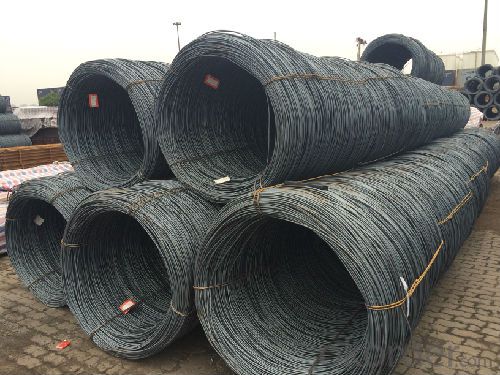
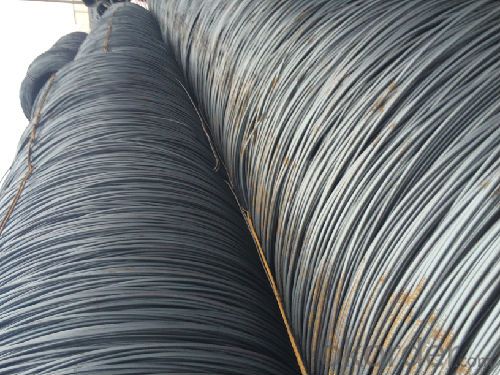
- Q: Types of wire rods
- There are many kinds of wire rods. Carbon steel wire rod in the low carbon steel wire rod, commonly known as cord, medium and high carbon steel wire rod commonly known as hard wire. Wire rods are mainly used for drawing billets, and can be used directly as building materials and machined into mechanical parts. Stainless steel wire rod is used for making stainless steel wire, stainless steel spring steel wire, stainless steel wire and stainless steel wire rope. With the development of production technology, square has appeared,
- Q: How is steel wire rod used in the manufacturing of wire forms for roller coasters?
- Steel wire rod is a crucial component in the manufacturing of wire forms for roller coasters. It serves as the raw material from which various wire forms are created, such as track supports, safety restraints, and other structural elements. The high tensile strength and durability of steel wire rod make it an ideal choice for roller coaster construction. Roller coasters experience immense forces and stresses during operation, including bending, twisting, and sudden changes in velocity. Steel wire rod offers exceptional strength and flexibility, enabling it to withstand these forces and maintain its structural integrity. To manufacture wire forms for roller coasters, the steel wire rod is first carefully selected for its specific mechanical properties, such as tensile strength and ductility. It is then processed through a series of stages, including drawing, annealing, and galvanizing. Drawing involves pulling the wire rod through a series of dies to reduce its diameter and increase its length, resulting in a wire with the desired dimensions. Annealing, a heat treatment process, is performed to enhance the wire's flexibility and reduce its brittleness. This is crucial for ensuring the wire forms can withstand the constant vibrations and movements experienced during roller coaster operation. Finally, the wire forms are galvanized to provide corrosion resistance. This involves coating the wire with a layer of zinc, which protects it from environmental elements, such as moisture and oxidation, thereby extending its lifespan. Once the steel wire rod has been processed and transformed into wire forms, it is used in various applications throughout the roller coaster. For example, it may be used to create the track supports that hold the coaster's rails in place, ensuring stability and safety. Additionally, it can be used to manufacture safety restraints, such as lap bars and shoulder harnesses, which are vital for securing passengers during the thrilling ride. In summary, steel wire rod plays a crucial role in the manufacturing of wire forms for roller coasters. Its exceptional strength, flexibility, and durability make it an ideal material for constructing various structural elements and safety components. By undergoing careful processing and treatment, steel wire rod ensures the safety and exhilaration of roller coaster riders around the world.
- Q: What are the common surface treatments for steel wire rod?
- Steel wire rods can undergo various surface treatments to improve their appearance, durability, and resistance to corrosion. One popular treatment is galvanization, which involves applying a layer of zinc to the rod. This zinc coating acts as a protective barrier against rust and corrosion, making galvanized wire rods suitable for outdoor use and harsh environments. Phosphating is another common treatment, where a phosphate coating is applied to the steel wire rod. This coating enhances the adhesion of subsequent coatings or paints, making it ideal for wire rods that will undergo further processing or painting. Powder coating is a third treatment option, where a dry powder is applied to the rod and then cured under heat. This creates a durable and attractive finish that resists chipping, scratching, and fading. Powder coating is commonly used in applications that require both aesthetics and durability, such as furniture, automotive parts, and appliances. In addition, steel wire rods can undergo pickling, where they are immersed in an acid solution to remove any surface scale or impurities, or electroplating, which involves depositing a thin layer of metal onto the wire rod to enhance its appearance and corrosion resistance. Ultimately, the choice of surface treatment for steel wire rods depends on the specific requirements of the application. By selecting the appropriate treatment, the wire rod can be protected and enhanced to meet desired performance and aesthetic standards.
- Q: How is steel wire rod tested for yield strength?
- Steel wire rod is tested for yield strength through a standardized procedure called tensile testing. In this process, a sample of the wire rod is subjected to gradually increasing tension until it reaches its breaking point. The test measures the maximum amount of stress that the wire rod can withstand before it starts to deform permanently, indicating its yield strength.
- Q: How is steel wire rod used in the production of wire mesh for automotive applications?
- Steel wire rod is used in the production of wire mesh for automotive applications by being drawn through a series of dies to reduce its diameter and increase its length. This process, known as wire drawing, results in a thin and elongated wire that is then woven or welded to create wire mesh. The wire mesh is then utilized in various automotive applications such as reinforcing structures, providing protection, or acting as a filtration system.
- Q: How is the inclusion content of steel wire rod determined?
- The determination of inclusion content in steel wire rods involves various methods and techniques. One commonly used approach is the utilization of microscopic analysis, wherein a wire rod sample is examined under a microscope to identify and quantify the inclusions present. To prepare the sample, a small section of the wire rod is typically cut and affixed onto a microscope slide, allowing for a clear and detailed view of the inclusions. Subsequently, the sample is polished and etched to enhance the visibility of the inclusions. Under the microscope, the inclusions can be categorized based on their size, shape, and composition. They can range from tiny particles to larger clusters and can be identified as oxides, sulfides, or other impurities. Quantification of the inclusion content involves counting the number of inclusions within a specific area or volume of the sample. This can be accomplished either manually by individually counting each inclusion or by utilizing automated image analysis software capable of detecting and tallying the inclusions. Besides microscopic analysis, other techniques such as scanning electron microscopy (SEM) and energy-dispersive X-ray spectroscopy (EDS) can be employed to further analyze the inclusions and ascertain their elemental composition. The inclusion content of steel wire rods is a critical quality parameter, as excessive inclusions can detrimentally impact the mechanical properties and overall performance of the final product. Hence, ensuring the accuracy of inclusion content determination is vital for guaranteeing the quality and reliability of the steel wire rods.
- Q: What are the common industry trends for steel wire rod?
- Some common industry trends for steel wire rod include increasing demand from the construction and automotive sectors, advancements in technology leading to improved product quality and efficiency, growing emphasis on sustainability and recycling practices, and the emergence of new markets and applications for steel wire rod products.
- Q: What are the common industry challenges for steel wire rod?
- Some common industry challenges for steel wire rod include fluctuating raw material costs, intense competition, evolving customer demands, stringent quality standards, and environmental regulations. Additionally, the steel wire rod industry often faces issues related to technological advancements, workforce training, and the need for continuous innovation to stay ahead in the market.
- Q: What are the different types of steel wire rod rolling processes?
- There are several different types of steel wire rod rolling processes, including hot rolling, cold rolling, and warm rolling. Each process has its own advantages and is used for specific applications. Hot rolling involves heating the steel rod and then passing it through a series of rollers to reduce its diameter and increase its length. Cold rolling, on the other hand, is performed at room temperature and results in a smoother finish and increased strength. Warm rolling is a combination of hot and cold rolling, where the steel rod is heated to a lower temperature than in hot rolling but higher than in cold rolling. This process offers a balance between strength and surface quality.
- Q: What are the different types of steel wire rod coatings used for increased ductility?
- There are several types of steel wire rod coatings used to enhance ductility, including zinc coating (galvanized), copper coating, and aluminum coating. These coatings provide a protective layer that helps prevent corrosion and improve the overall strength and flexibility of the wire rod.
Send your message to us
Hot Rolled Steel Wire Rod in Coils SAE1008B
- Loading Port:
- Tianjin
- Payment Terms:
- TT OR LC
- Min Order Qty:
- 30 m.t.
- Supply Capability:
- 20000 m.t./month
OKorder Service Pledge
OKorder Financial Service
Similar products
Hot products
Hot Searches
Related keywords
